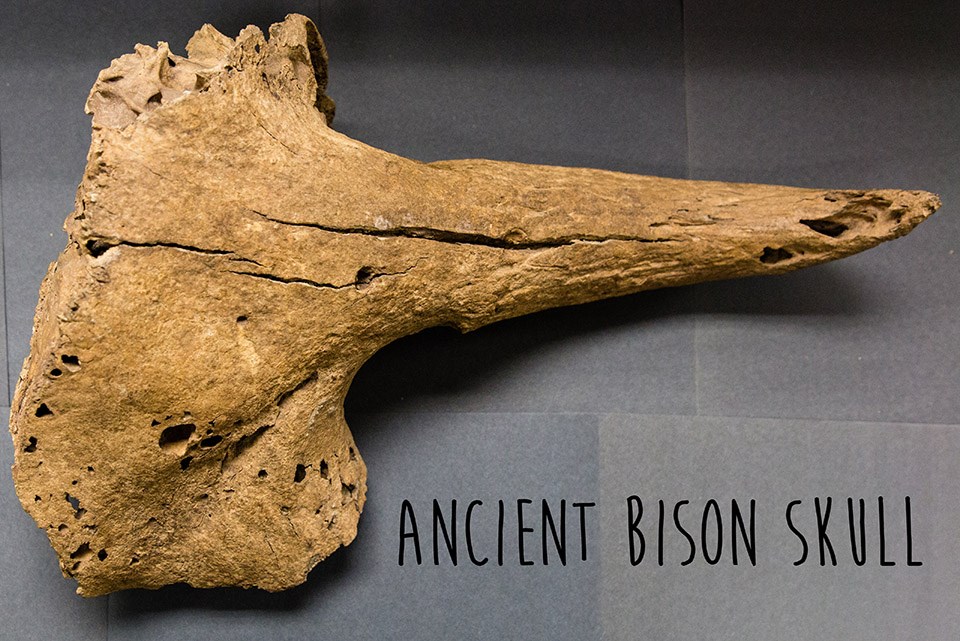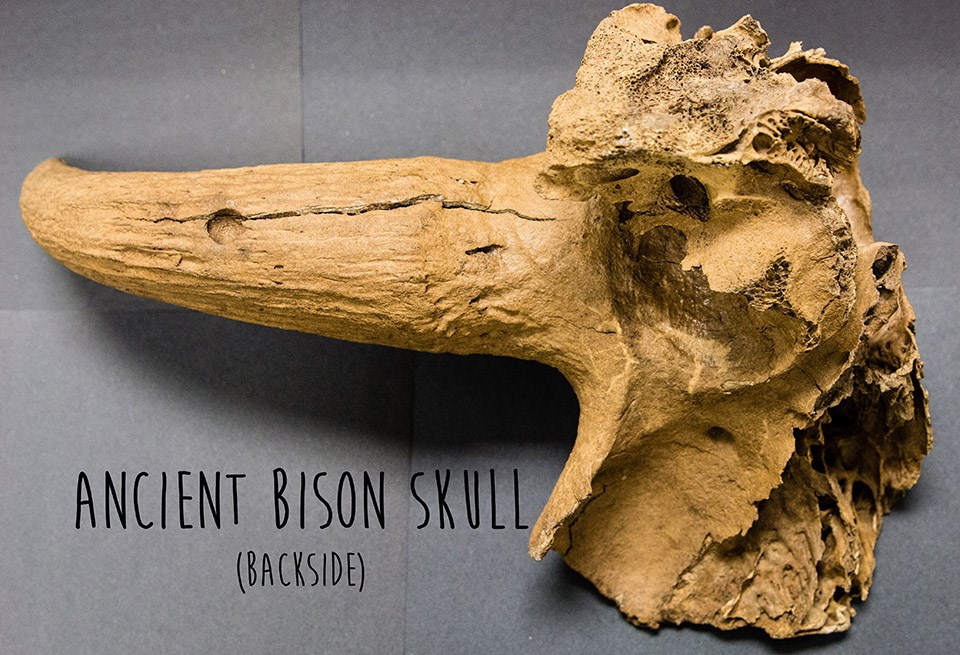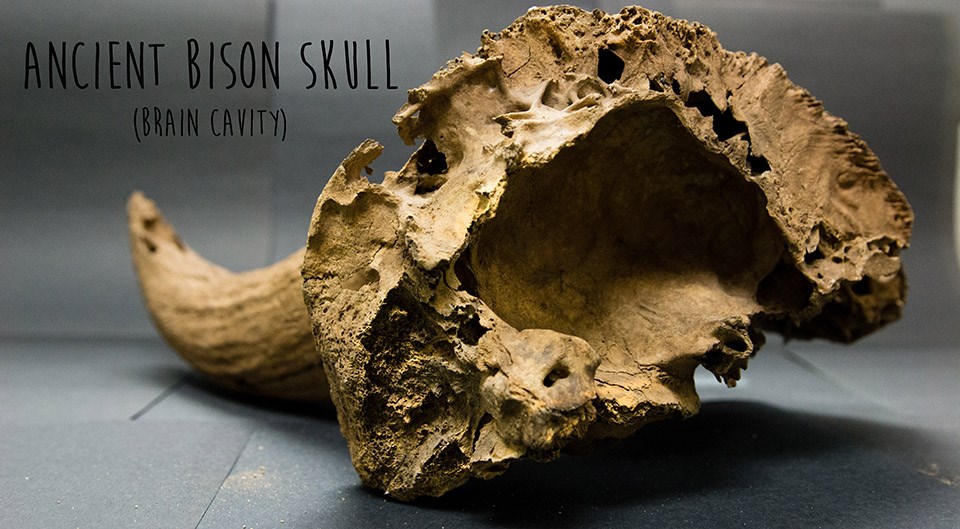Last updated: March 8, 2018
Article
#Sciencedeskdigs: Ancient Bison Skull

NPS Photo/M.Reed
What is it?
“It’s a mineralized Bison antiquus skull - an animal that likely lived 10,000-14,000 years ago along the ancient North Platte River drainage. This is the ancient relative of modern Bison bison - the bison we see in parks today. At least I am 99% sure it is! The Denver Museum of Nature and Science has agreed to help verify the species and age. Last year, a friend of mine was using a backhoe to dig a utility trench near Torrington in Eastern Wyoming, north of the North Platte River and came across a gravelly muddy layer of earth about 8 feet deep. Then he saw this skull in the backhoe bucket and took it home and put it away in his barn. It is bigger than a typical modern bison, an adult Bison antiquus could be up to 3,500 pounds, 7-8 feet tall, 15 feet long, with horns 3 feet long tip to tip! This particular animal may have shared its environment with giant sloths, short-faced bears, giant tortoises, saber-toothed cats, dire wolves, camels, pronghorn, mammoths and mastadon, a giant armadillo like Glypotherium, and giant beavers!

NPS Photo/ M.Reed
Bison, in any time, hold a special place for me because not only are bison an important symbol to the National Park Service (one stands proudly in the center of the NPS logo) but my job is to combine science and stewardship to protect bison and their ecology, “unimpaired for future generations!” Understanding the biodiversity that existed thousands of years ago in this area of the United States helps me better understand and appreciate the wildlife that now live in and around our national parks.”

NPS Photo/M.Reed
